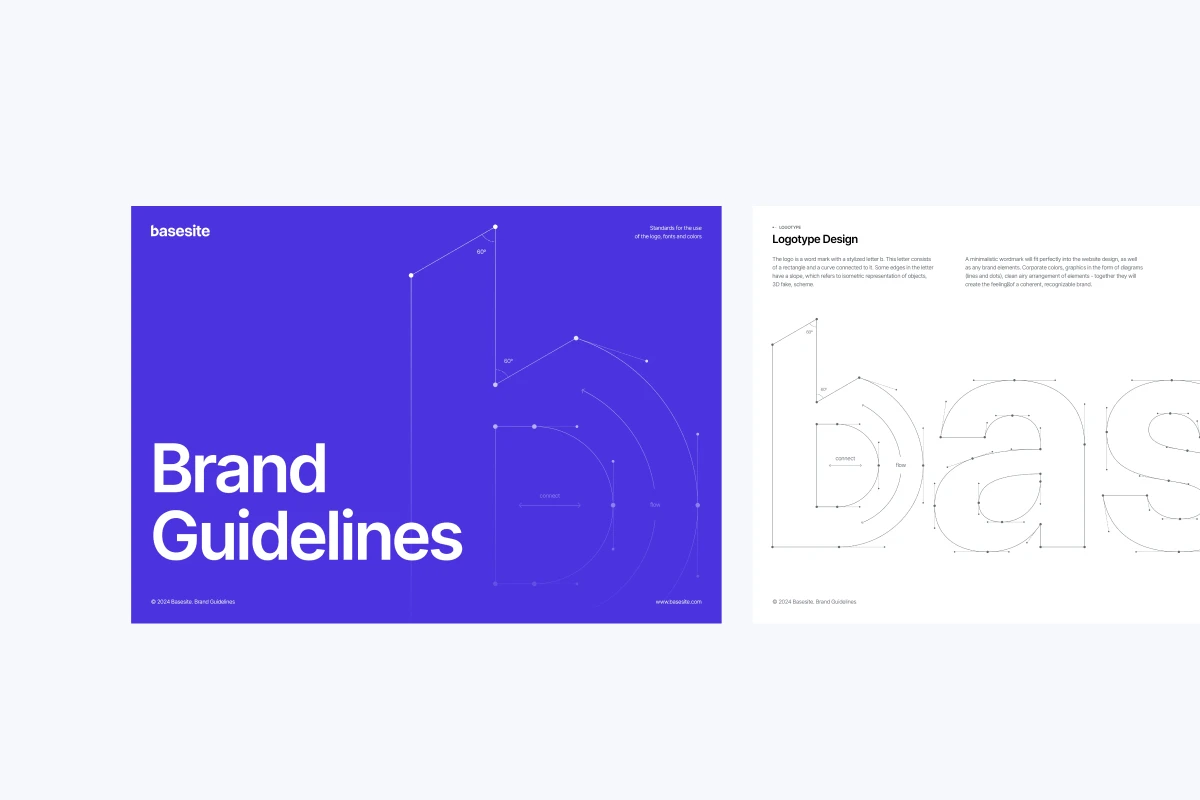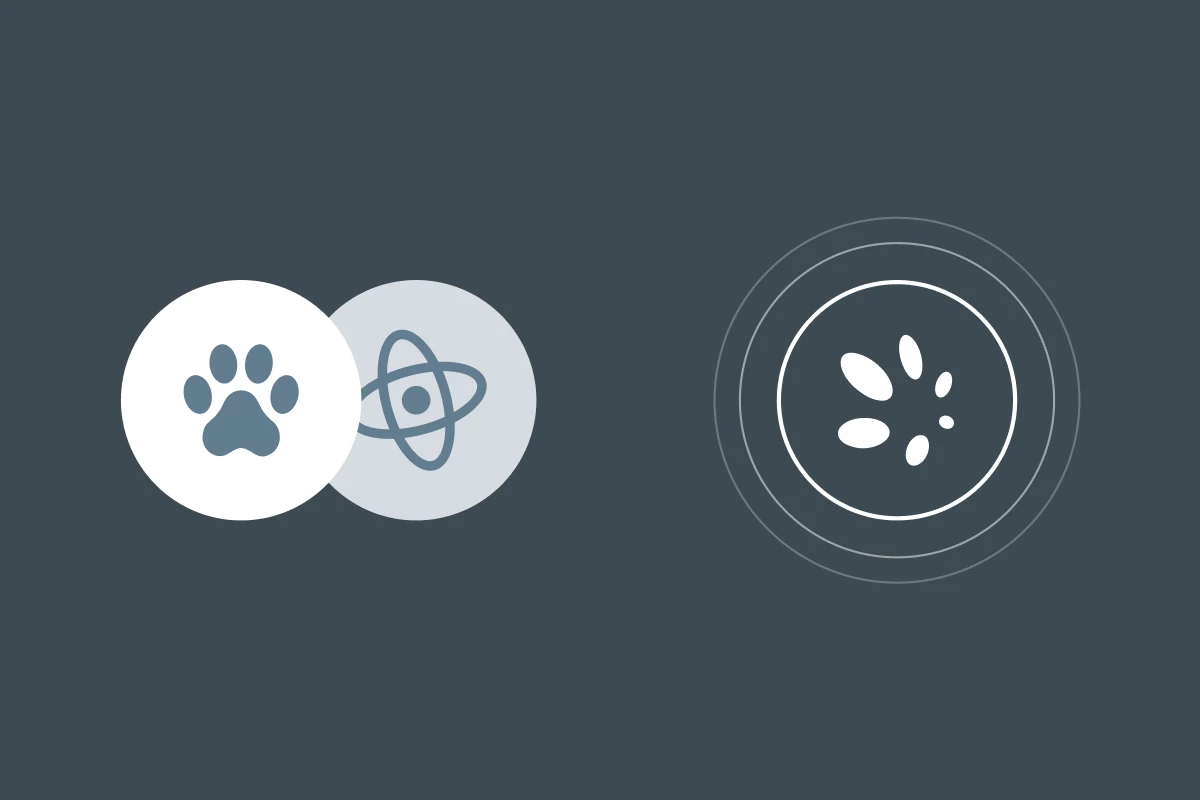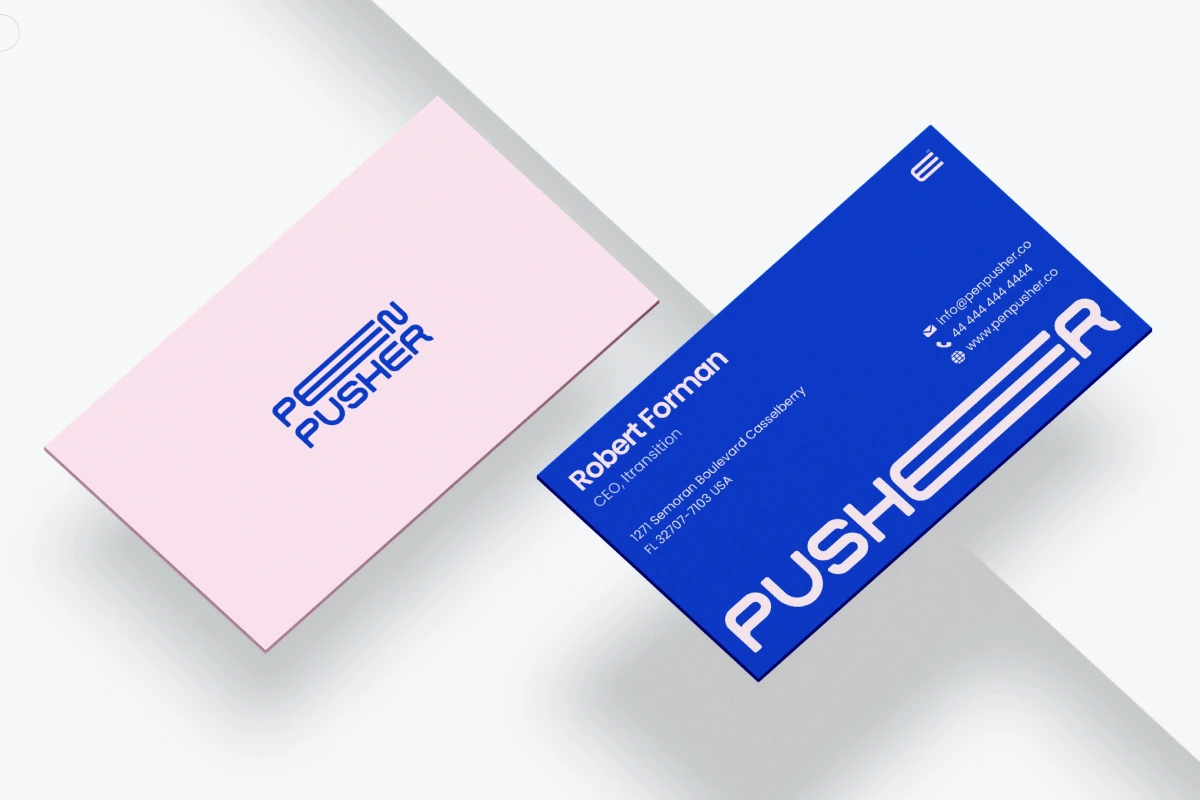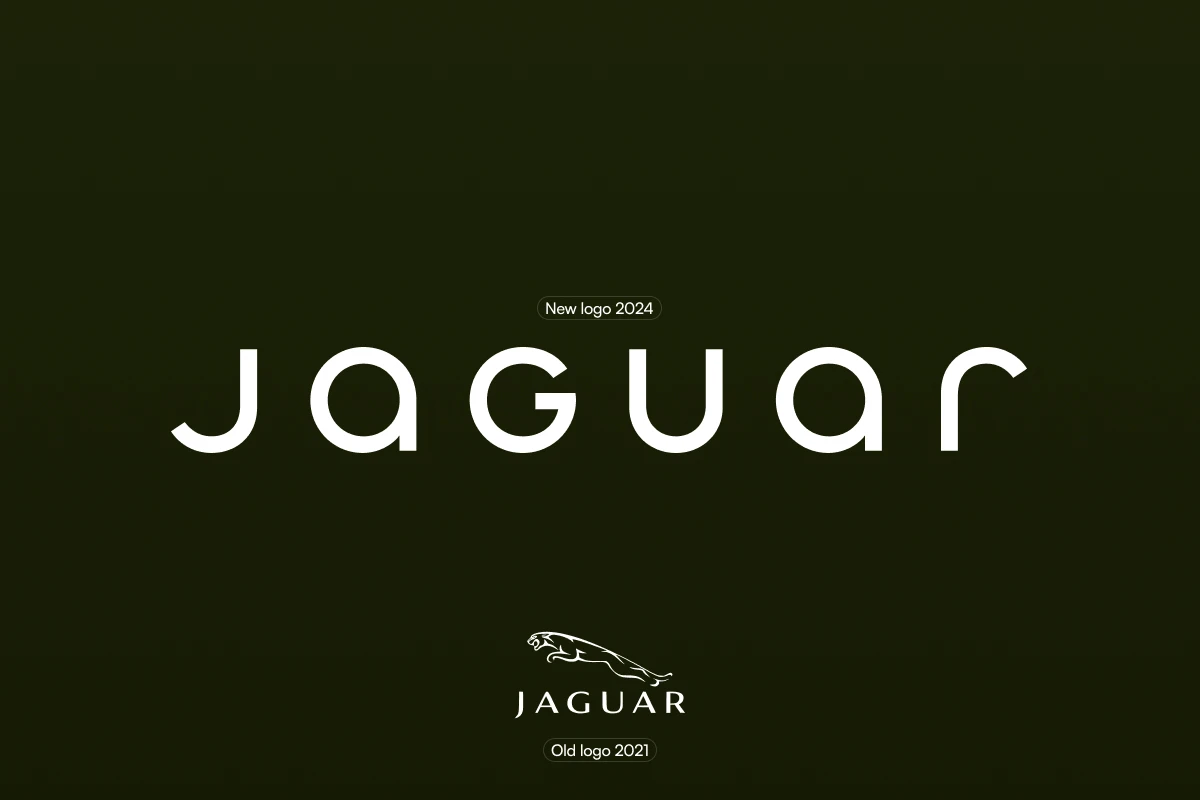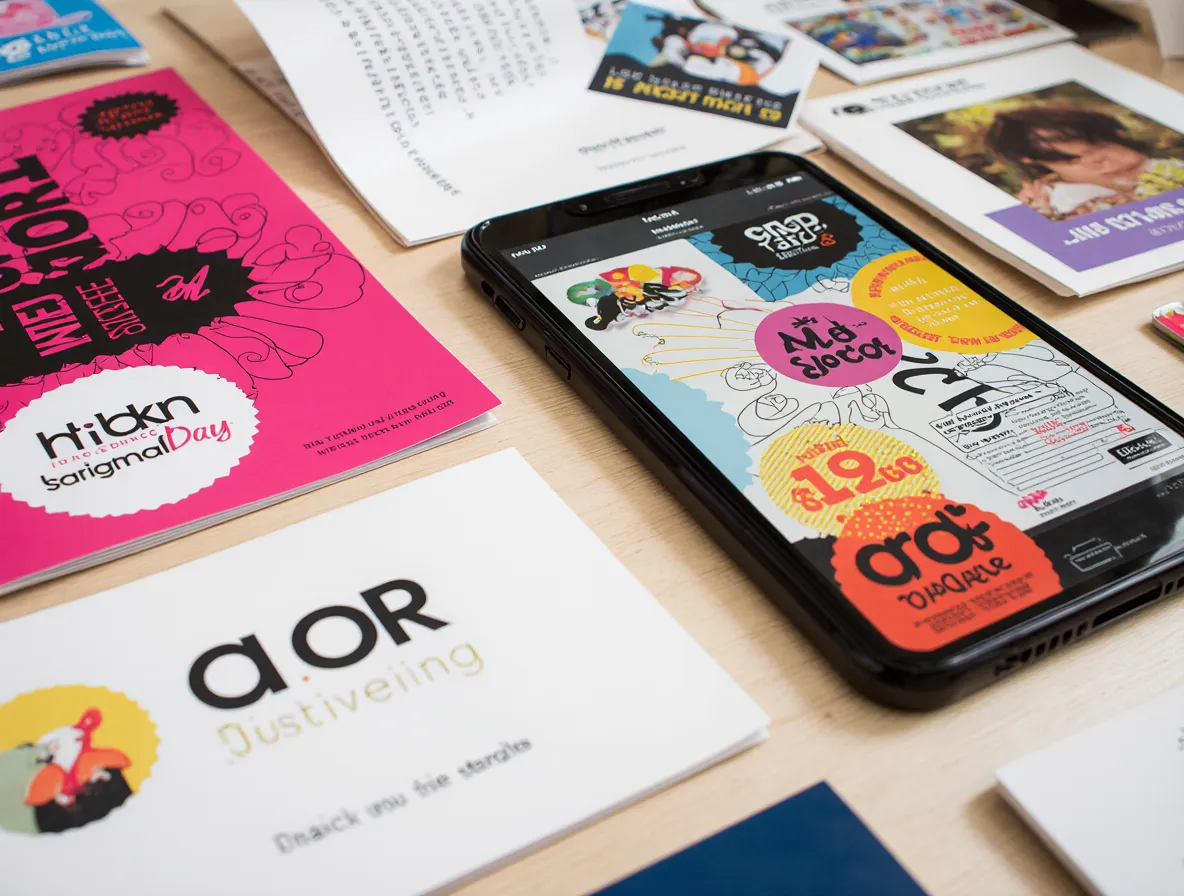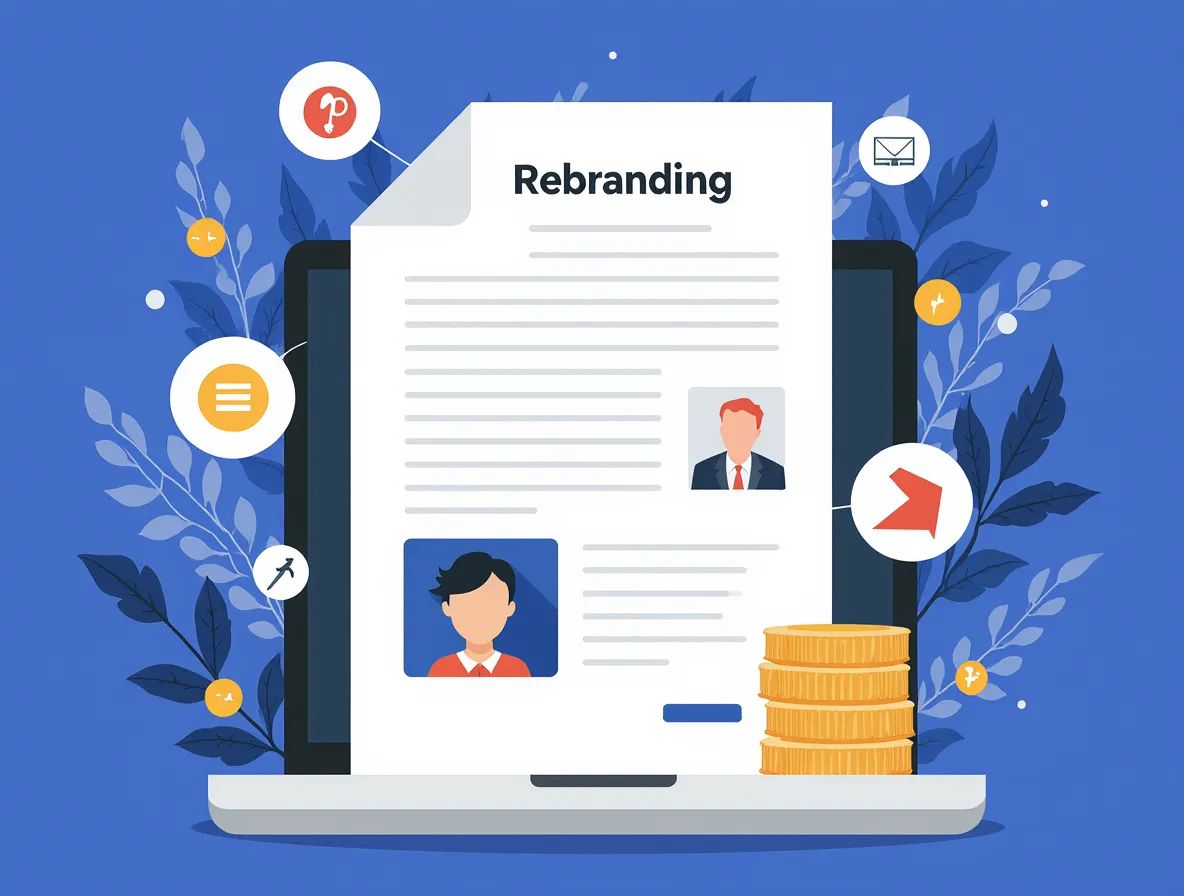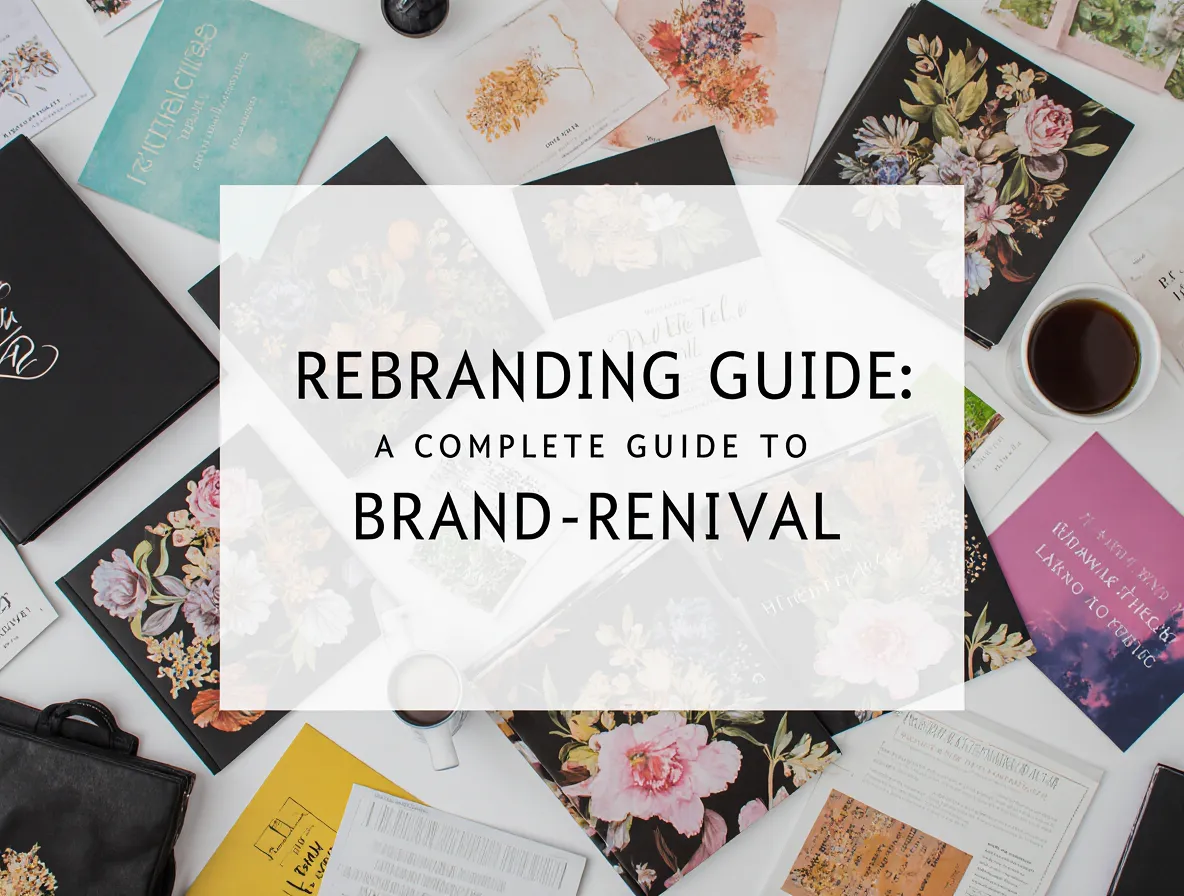Your sales team reports declining engagement. Customer surveys show confusion about what you actually offer. Competitors with clearer positioning are winning bids you used to dominate. These aren't isolated problems—they're symptoms of a brand that needs rebranding.
Rebranding isn't about chasing trends or fixing a logo you're bored with. It's a strategic response to fundamental shifts in your business, market, or customer base. The decision carries financial risk—rebranding costs range from $50,000 for small companies to $500,000+ for enterprises, according to Branding Strategy Insider research. Getting it wrong means wasted budget and confused customers. Getting it right means recaptured market position and renewed growth.
What Actually Counts as Rebranding?
Rebranding is a coordinated change to how your company presents itself to the market, affecting brand identity change, messaging, positioning, or all three simultaneously.

The scope varies significantly. A visual rebranding updates logos, colors, and design elements while keeping your core message intact. Messaging rebranding repositions how you talk about your value without touching visual identity. Complete rebranding overhauls everything—name, visuals, messaging, and market repositioning. Companies that need rebranding often confuse routine design updates with strategic rebranding. The distinction matters: design updates are cosmetic, rebranding addresses fundamental business challenges.
From Rare Events to Strategic Tools: How Corporate Identity Evolved
Twenty years ago, rebranding was rare and dramatic—typically triggered by mergers, scandals, or complete business transformation.
The process was expensive and slow. Companies hired traditional agencies, conducted year-long brand studies, and unveiled new identities with massive media campaigns. The risk was enormous because execution required reprinting everything physical: signage, packaging, stationery, vehicle wraps. Once you committed to new brand materials, you were locked in for years.
- Several approaches failed. "Stealth rebranding"—gradually shifting brand elements—confused customers more than it helped. "Co-branding" strategies where companies kept old and new identities running simultaneously created operational nightmares. The "revolutionary rebrand" approach—changing everything overnight without customer preparation—frequently backfailed, as Gap discovered in 2010 when customer backlash forced them to abandon a new logo after just one week.
- Modern rebranding operates differently because digital infrastructure enables speed and iteration. You can test new brand elements with specific audience segments before full rollout. Digital assets update instantly across all platforms. Customer feedback arrives in real-time through social channels and analytics. The traditional risk factors have diminished, making strategic rebranding accessible when business conditions demand it.
Five Clear Signals Companies That Need to Rebrand Should Recognize
Your Target Customer Has Fundamentally Changed
Your brand was built for an audience that no longer represents your revenue source. This happens when you successfully move upmarket from SMBs to enterprise, shift from B2C to B2B, or pivot from regional to national presence.
Targeting new audience segments requires fresh positioning. Mailchimp faced this in 2018—built as a scrappy email tool for freelancers, they were closing deals with Fortune 500 companies while sporting a cartoon monkey mascot. Their rebrand to sophisticated, minimalist design reflected their actual customer base: marketing directors at large corporations with seven-figure budgets.
Your Market Position No Longer Matches Your Actual Offering
You've added services, changed your business model, or expanded capabilities, but your brand still signals your old position. Consider a software company that launched as a reporting tool but evolved into a complete business intelligence platform. Their brand still emphasizes "easy reports" when they should be signaling "enterprise data infrastructure."
This creates three problems: qualified prospects eliminate you in early research stages, sales teams spend meeting time correcting brand-created misconceptions, and pricing power stays artificially low because positioning suggests limited capability. Brands that need repositioning face this misalignment between capability and perception.
Recognizing these signals is the first step—transforming them into strategic advantage requires experienced execution. Our rebranding services help companies navigate the entire journey from market analysis to seamless implementation, ensuring your new brand drives measurable business results.
Merger or Acquisition Requires Identity Integration
Two companies with distinct brands must become one entity in the market's mind. The challenge isn't cosmetic—it's strategic. You're choosing which brand equity to preserve, which to sunset, and how to communicate continuity to nervous customers.
Company repositioning after M&A activity requires careful navigation. Salesforce buying Slack in 2021 presented this problem. They chose integration, keeping Slack's distinct visual identity while aligning messaging around "digital HQ" to fit Salesforce's positioning.
Your Brand Actively Damages Your Reputation
Your brand has become associated with outdated practices, negative incidents, or values your company no longer holds. This is the highest-risk scenario requiring fastest action. Philip Morris's 2003 rebrand to Altria specifically addressed the liability of the name "Philip Morris" in a tobacco-skeptical market. Their portfolio included Kraft Foods and Miller Brewing—valuable assets damaged by association with cigarettes.
The cost of delay compounds daily as the brand continues generating negative associations. Changing brand values publicly becomes essential when historical associations create active barriers.
Competitive Disadvantage From Generic Identity
Your brand lacks differentiation in a crowded market, causing immediate elimination during prospect research. Research from the Corporate Executive Board shows B2B buyers complete 57% of their purchase decision before contacting vendors. Your brand operates during this silent elimination phase. Generic branding shows up as stock photography instead of distinctive visual language, industry jargon-heavy messaging that could apply to any competitor, and color schemes matching category defaults.
When Dropbox rebranded in 2017, they moved away from generic cloud storage imagery to bold, distinctive illustrations and vibrant colors. The goal wasn't aesthetic preference—it was survival in a market where Google, Microsoft, and Apple offered functionally similar products. Brands in need of a rebrand often share this invisibility problem.
{{mike-quote-1}}
Why Companies Delay When It's Time to Rebrand
Fear of losing existing brand equity keeps leadership hesitant long after rebranding becomes necessary. This fear is legitimate but often miscalibrated. Brand equity only matters if it drives current business objectives. If your brand has 90% recognition in a customer segment you've exited, that equity has zero value. Brands that need rebranding frequently overestimate the value of legacy brand recognition.
- Three specific costs accumulate during delay. Opportunity cost from misaligned positioning adds 15-30% to sales cycle length.
- For a company closing $200,000 average contracts with a six-month sales cycle, brand misalignment adding one month costs approximately $1.2 million in delayed revenue annually across a ten-person sales team.
- Pricing compression from outdated premium signals means businesses that need rebranding signaling "budget option" through dated design cannot support premium pricing regardless of product quality.
- Talent acquisition handicap in competitive markets creates problems because top candidates research employer brands thoroughly, and dated or generic brands signal stagnation.

Looking From Another Angle: When Rebranding Destroys Value
Rebranding can damage companies with strong existing brand equity who rebrand prematurely or without strategic justification.
The risk is highest for established brands with deep customer loyalty and clear market position. Tropicana's 2009 packaging rebrand eliminated their iconic orange-with-straw image for generic carton design. Sales dropped 20% immediately—$30 million in six weeks. Customers couldn't find the product they trusted. Tropicana reverted to original packaging within two months.
- This happens when companies misdiagnose internal dissatisfaction as market reality. Leadership grows tired of seeing the same brand daily. They interpret their boredom as customer boredom. But customers don't live with your brand the way you do. They interact briefly during purchase decisions. Familiar, trusted brands reduce cognitive load and risk perception.
- The legitimate counterargument works in specific scenarios. Companies in genuinely stagnant categories where customer expectations have remained static for decades may damage their brands through unnecessary change. Regional banks, insurance providers, and CPG staples often benefit from brand consistency that signals stability rather than innovation.
However, for technology companies, professional services firms, and companies that need to rebrand in rapidly evolving markets, the opposite risk dominates. Maintaining outdated brands in fast-changing sectors signals inability to adapt.
Not every brand challenge requires a complete overhaul. Sometimes a strategic brand refresh —updating visual elements and messaging while preserving core equity—delivers the modernization you need without the risk of alienating loyal customers. Understanding which approach fits your situation determines success.
Three Costly Mistakes Brands That Need to Be Rebranded Make
Changing Brand Without Changing Business Reality
Companies rebrand to signal transformation they haven't actually delivered. They want to be perceived as innovative but haven't launched innovative products. They want premium positioning but deliver mid-market service levels. The new brand creates expectations the business cannot meet. This is worse than no rebrand—you've now created a gap between promise and reality that damages credibility. Updating mission statements without operational changes exemplifies this disconnect.
Why companies do this: Rebranding is faster and more controllable than operational transformation. A six-month rebrand project with clear deliverables feels more manageable than multi-year product development or infrastructure investment.
What it costs: Customer acquisition may temporarily improve as the new brand attracts prospects aligned with the new positioning. But retention collapses when product experience doesn't match brand promise. For a SaaS company with $500K annual customer lifetime value and 15% monthly churn instead of 5%, the brand-created gap destroys $1.2M in lifetime value per 10 new customers acquired.
Rebranding Without Customer Research
Companies make brand decisions based entirely on internal perspective and competitive analysis. They skip customer interviews, don't test positioning concepts with target buyers, and fail to validate that their perceived brand problems actually exist in the market. Sometimes the "brand problem" is internal mythology. Your sales team blames the brand for lost deals when the actual issue is product gaps, pricing, or sales process. Brands which need rebranding should validate assumptions before committing resources.
Why companies do this: Customer research extends timelines and creates ambiguity. Leadership wants clear answers and forward momentum. An internal strategy session delivers a decision in two weeks. Proper customer research takes two months.
What it costs: The IBM Institute for Business Value found that companies conducting systematic brand perception research before rebranding had 73% higher ROI from brand investments than companies using internal assumptions alone.
Inconsistent Rollout Across Customer Touchpoints
The website updates to the new brand but sales decks, product UI, support documentation, and email signatures lag by months. Customers encounter mixed branding that signals internal dysfunction. If you can't coordinate a brand rollout, how will you coordinate their implementation project? The inconsistency damages the credibility the rebrand was meant to establish. Time rebranding implementation requires synchronized execution across all departments.
Why companies do this: Different teams control different touchpoints with varying priorities and workloads. Marketing owns the website and launches on schedule. Product teams are in the middle of a development sprint and can't prioritize UI updates. Sales is hitting end-of-quarter and won't slow down to learn new messaging.
What it costs: B2B buyers interpret inconsistent branding as organizational chaos. For companies where average deal sizes exceed $50K and sales cycles involve multiple stakeholder touchpoints, brand inconsistency during rollout increases perceived risk and extends decision cycles. The Gartner Group estimates this adds 20-35% to B2B sales cycle length during transition periods.
{{vad-quote-1}}
Should You Rebrand? A Practical Diagnostic
Use this framework to assess whether your situation justifies rebranding investment. Score each statement from 0 (completely false) to 3 (completely true): Our target customer profile has shifted significantly from who we originally built the brand for. Sales consistently reports brands that need a rebrand creates misconceptions they must correct early in conversations.
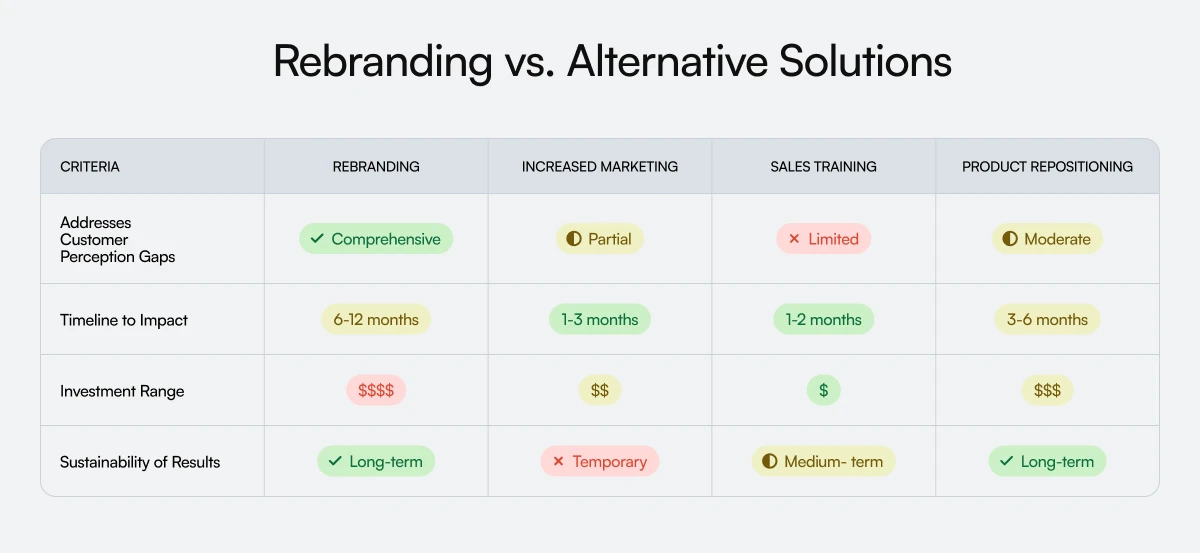
Once you've determined that rebranding is necessary, success depends on strategic planning and execution. Explore our comprehensive guides covering everything from agency selection and strategic approaches to common pitfalls and measuring ROI.
- Rebranding: A Complete Guide to Brand Renewal
- Rebranding Strategies: How to Build a Successful Path
- How to rebrand small businesses
- Rebranding vs. brand refresh: how to choose the right scale of change (guide + checklist)
- Rebranding for SaaS and technology companies: tasks, specifics, examples of solutions
- Mistakes in rebranding: what businesses should avoid
- Rebranding for startups: how to create a unique image from the very beginning
- How to Know if Your Rebrand is Successful - Measuring the Success of Your Rebrand
Customer research shows confusion about what we actually offer or who we serve. Our brand visually resembles 3+ direct competitors to the point of category invisibility. We've completed a major acquisition, merger, or business model change not reflected in current branding.
Additional factors: Qualified prospects eliminate us early in their research based on brand signals that don't match our actual capabilities. Our brand associations include outdated practices or positions we no longer hold. Recruiting top talent is harder than it should be given our actual company quality and compensation. We've lost 2+ significant deals where brand perception was cited as a decision factor. Our pricing power has declined despite product improvements, suggesting positioning problems.
Scoring interpretation:
- 0-8 points: No rebranding needed. Address specific marketing or product issues instead.
- 9-17 points: Monitor the situation closely. Consider targeted brand updates rather than complete rebranding.
- 18-24 points: Strong rebranding case exists. Begin strategic planning and customer research.
- 25-30 points: Urgent rebranding need. The current brand is actively damaging business performance.
Evaluation Criteria
{{mike-quote-2}}
Building Your Business Case for Brand Revamp
Effective business cases quantify both costs and expected outcomes in financial terms leadership can evaluate against alternative investments.
- Define specific, measurable objectives tied to business performance. Instead of "modernize our brand" specify "reduce sales cycle length from 180 to 135 days by eliminating brand-created misconceptions about our capabilities, driving $2.1M in accelerated revenue in year one."
- Document the cost of maintaining the current brand. Calculate revenue lost to extended sales cycles, price compression, and lost deals where brand was a factor. Quantify talent acquisition delays and quality issues. This establishes that keeping your current brand isn't cost-neutral—it has a specific, quantifiable cost.
Compare rebranding investment to alternative solutions. Could increased marketing spend overcome brand-created obstacles? Could sales enablement training allow reps to overcome brand misconceptions? Are there product or service changes that would address the root cause without rebranding? A comprehensive brand revamp addresses perception gaps that tactical fixes cannot solve.
Final Considerations for Execution When a Company Needs Rebranding
Once rebranding is justified, execution determines success or waste.
The process requires cross-functional coordination across marketing, sales, product, legal, and operations. Establish clear ownership—typically CMO or VP Marketing—with direct executive sponsorship from CEO or President. When a company needs rebranding, leadership alignment becomes critical for success.
- Budget realistic timelines. Complete rebranding for mid-size companies takes 6-9 months from strategy to full rollout. Enterprise companies need 12-18 months. Rushing creates consistency problems.
- Plan customer communication carefully. B2B customers need advance notice, clear rationale, and explicit statements about what stays the same—product functionality, support quality, contractual terms. Surprises damage trust.
- Measure results against the specific objectives in your business case. If you rebranded to reduce sales cycle length, track that metric monthly. If the goal was pricing power, measure average deal size and discount rates. Business cases without measurement become opinion-driven debates about subjective success.
Rebranding works when it addresses genuine market misalignment between your brand and your business reality. The decision framework is straightforward: identify specific, measurable business problems caused by brand perception, quantify the cost of those problems, and compare rebranding investment to the cost of maintaining the status quo. Most companies wait too long, trying to extract more value from brands that stopped working. Market position erodes gradually until you're fighting to recover ground rather than defend leadership.








